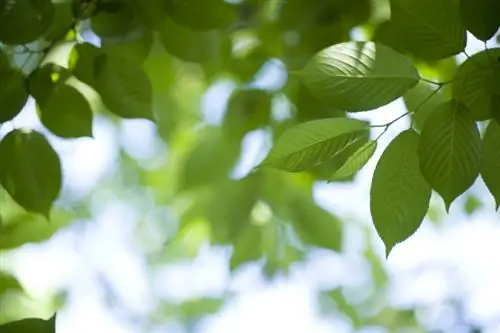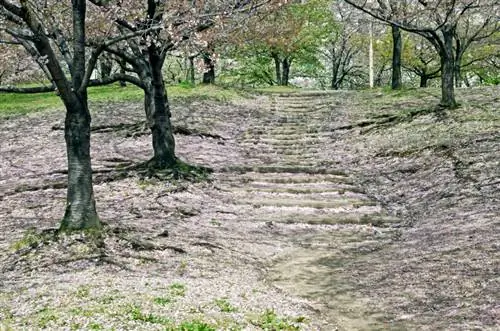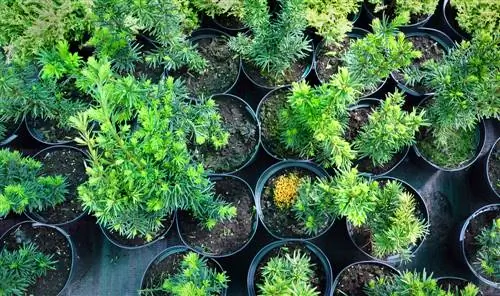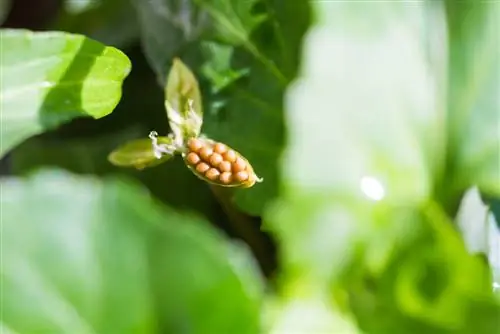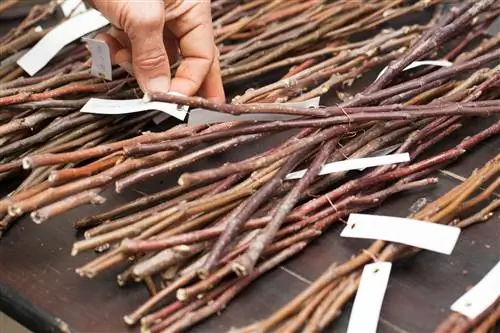- Author admin [email protected].
- Public 2023-12-16 16:46.
- Last modified 2025-01-23 11:19.
With berries, propagation is possible through offshoots. In order to get identical descendants of the same variety in cherry trees, one cutting is not enough. You need two planting parts: a rootstock and a scion.
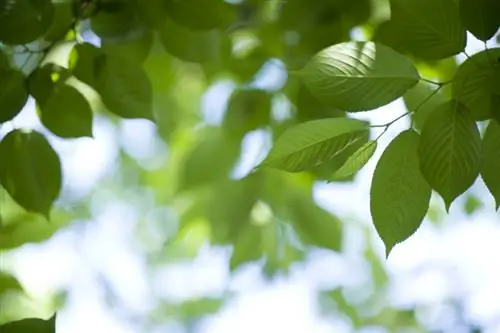
What are cherry tree cuttings or scions?
Cherry tree cuttings, also called scions, are he althy annual shoots with leaf buds about 30 cm long. They are used to propagate identical offspring of the same variety of a cherry tree by grafting them onto a suitable rootstock.
Offshooting is a type of propagation in which one- to perennial shoots are derived from the mother bush and covered with soil where they take root. Currants and gooseberries can be propagated quite easily in this way. Cutting wood propagation, in which the shoots cut from the bush are stuck into the ground to root, is also the usual method of propagation for many berry bushes.
However, with a cherry tree, a rooted offshoot or cutting would not produce the desired result. Because every cherry tree is a combination of at least two plants: a rootstock with its roots and a scion with its foliage. The rootstock is primarily responsible for growth, lifespan, flower formation and yield. The scion determines the taste, color and texture of the fruit, as well as the cherry tree's resistance to frost and fungus.
Win scions
Scions are about 30 cm long, he althy annual shoots with leaf buds. These are cut at the end of December to January from a strong, he althy tree whose variety you would like to have propagated. The scions are kept moist, wrapped in a cool place or protected from the wind outdoors until spring. Around the end of April, when the cherry trees begin to sprout, the scions are connected to the prepared base.
Grafting scions
In the spring, the well-preserved scions are grafted onto a suitable rootstock. A distinction is made between bark plugs and goat's foot plugs. When grafting the bark, proceed as follows:
- cut the bark and open it,
- put the scion behind it,
- Connect the finishing point firmly with raffia (€9.00 on Amazon) and seal with tree wax.
When grafting goat's foot, not only the bark but also the wood behind it is cut, the scion is inserted into the notch and also firmly connected to the base.
Tips & Tricks
If grafting on your own seems too time-consuming or complicated, you can also give the scions you have harvested to a nearby tree nursery for grafting.

